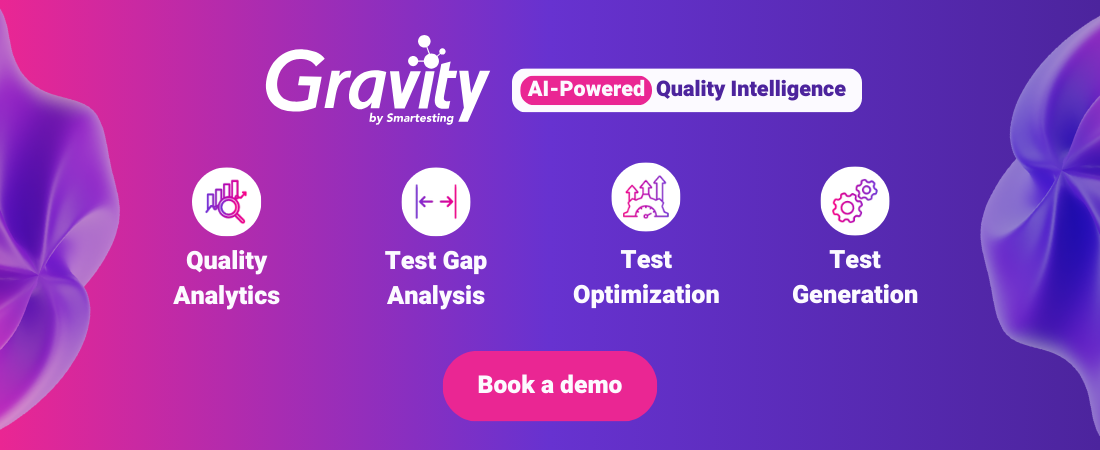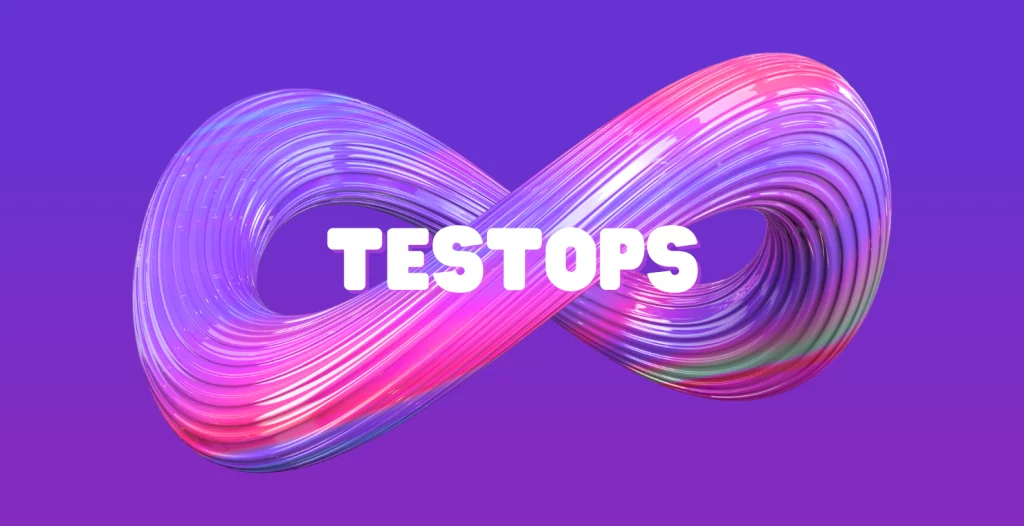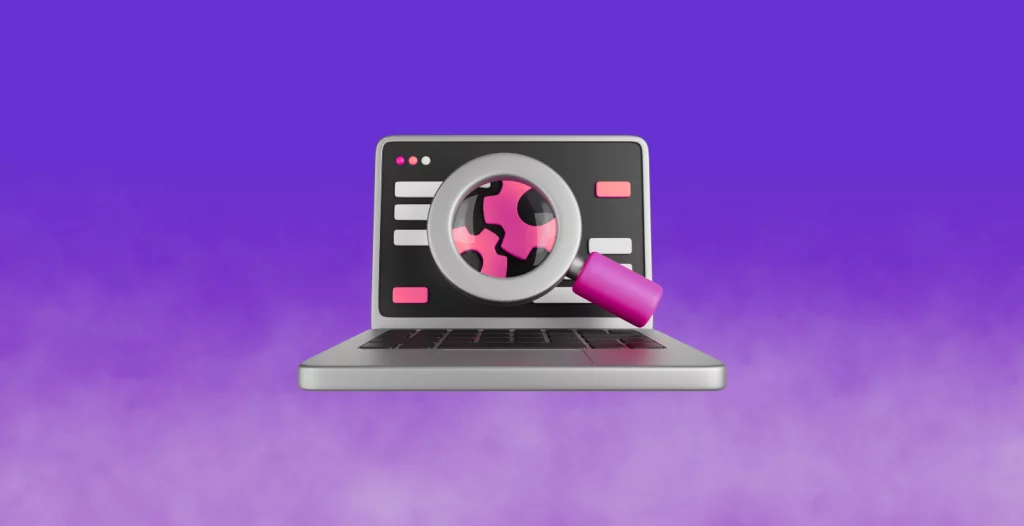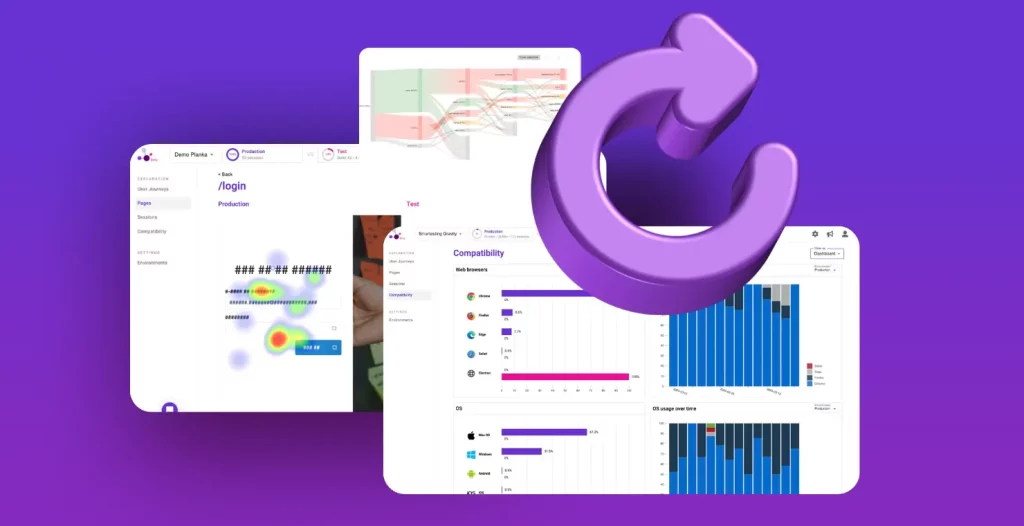
In today’s fast-paced and competitive software development landscape, ensuring high-quality products while meeting tight deadlines is a constant challenge for organizations. Quality Engineering has emerged as a strategic discipline to address this challenge. It focuses on building robust software production systems that deliver both speed and quality.
Customer journeys are at the heart of Quality Engineering to ensure value delivery, but it requires a continuous flow of software experimentation to keep them successful. The main challenge for organizations is the fragmentation of their software tool chain, limiting their capacity to optimize their customer journeys based on the actual usage and experience of their product.
Succeeding at the complex task of customer journeys requires a strategic blend of shift-right and shift-left practices that seamlessly combine human expertise with cutting-edge technology. One approach that has gained significant traction in recent years is Usage-centric Testing, which puts the user at the center of the testing process.
This article delves into the world of Usage-centric Testing with Gravity. Let’s explore how this powerful combination can streamline your Quality Engineering processes.
User Journeys Challenges in Quality Engineering
Quality Engineering organizes the software production system to streamline the flow of iteration from ideation to value delivery. Its application relies on the MAMOS framework that structures the entire software production in the 5 domains of Methods, Architecture, Management, Organization, and Skills.
User journeys direct the digital business performance, being on the conversion funnel once someone is interacting with the product. Users satisfied with their experience along their journey have a high probability of converting into customers, and hopefully, repeated ones. But one grain of sand in the experience can make the user switch to a competing offer in a matter of seconds.
The main problem is that most organizations have many grains of sand at their starting point, with a hard time even identifying them, to then start solving them.
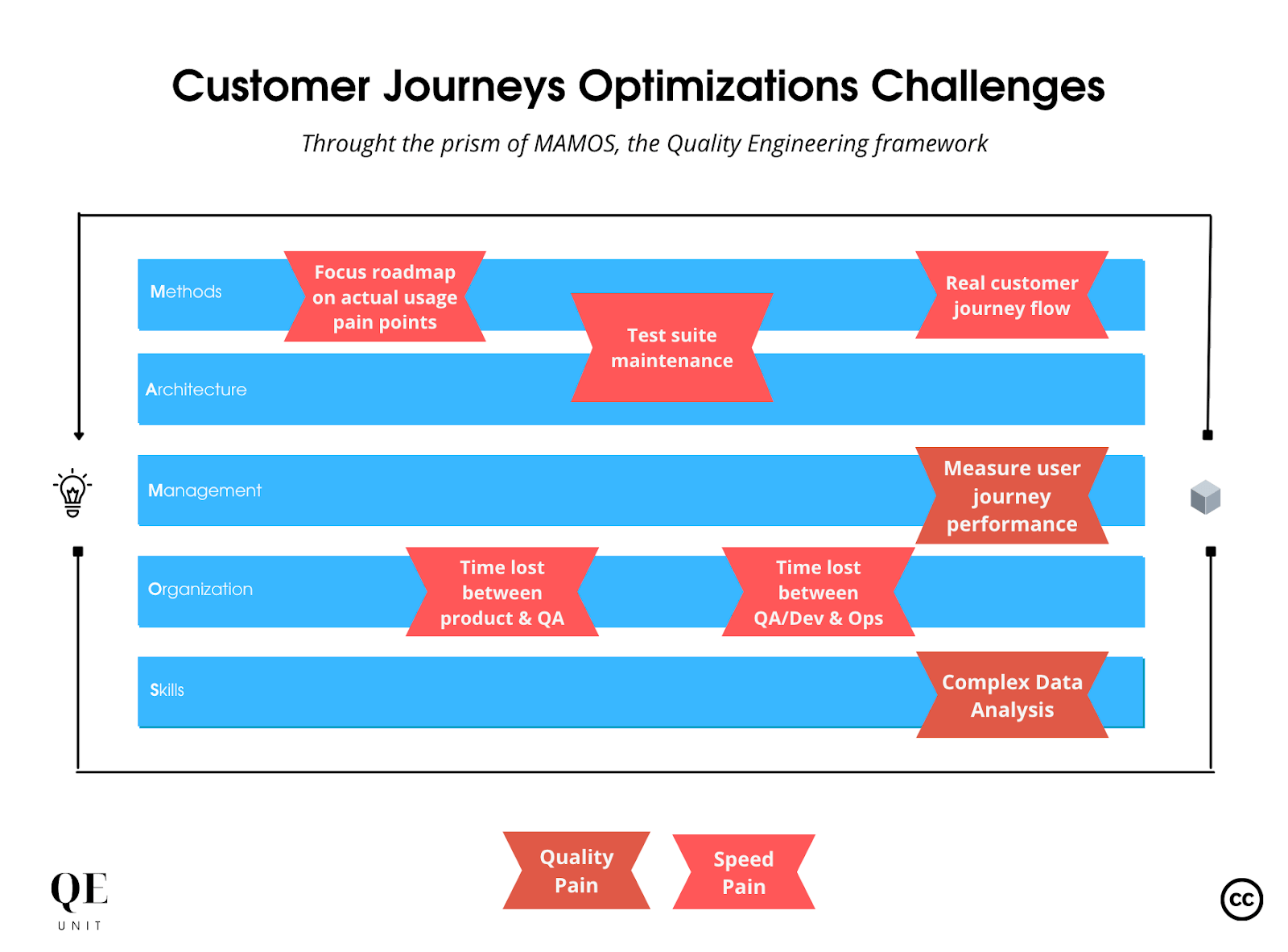
User experience optimizations is hard to master as it requires:
- Understanding and mapping the complex paths that users take within an application.
- Identifying potential bottlenecks and pain points throughout the user journey.
- Ensuring consistent and optimal performance across different devices and platforms.
- Detecting and addressing usability issues that impact user satisfaction.
- Validating the application’s behavior under different user scenarios.
- Managing and maintaining test scripts for various user journeys.
- Balancing the need for thorough testing with limited resources and time constraints.
- Keeping up with evolving user expectations and industry trends.
- Aligning user journey testing with other quality assurance activities.
- Integrating user journey testing into the overall testing strategy.
The above steps translate in multiple areas of the software production system even more complexing the problem. Different solutions without shared referential and integrations are used for user journey monitoring, A/B testing, and non-regression testing. Different teams may be working on performance optimization, while others are more focused on product features.
All these hands-offs and information fragmentation reduce the speed of learning and adaptation of the business in the face of fast-paced competition.
Usage-centric Testing for end-to-end learning
Usage-centric Testing is an approach in Quality Engineering that focuses on understanding and replicating real-world user behavior and interactions with software applications.
Unlike traditional testing methods that solely focus on functional requirements, Usage-centric Testing aims to simulate and validate the user journeys within the context of their actual environments. It involves mapping and analyzing the paths users take, the actions they perform, and the challenges they encounter during their interactions with the system.
In Usage-centric Testing, the emphasis is placed on the end-to-end user experience rather than isolated functional components. It seeks to capture the intricacies and nuances of how users engage with the application, taking into account factors such as user preferences, behaviors, and external dependencies.
Usage-centric Testing provides a holistic understanding of the application’s performance, usability, and overall quality, streamlining previously fragmented steps:
- User behavior data is collected through analytics and monitoring tools to gain insights into actual usage patterns.
- User journey mapping where the typical paths and scenarios users follow are identified and documented, identifying areas of improvement.
- Identify realistic test cases that align with user expectations and usage patterns based on actual production usage.

Usage-centric Testing complements other testing practices such as shift-left and shift-right methodologies. It combines the advantages of early detection and prevention of defects (shift-left) with the insights gained from real-world user interactions and feedback (shift-right). This integration allows organizations to optimize the end-to-end process of software production.
Gravity streamlines Usage-centric Testing
Gravity streamlines Usage-centric Testing by providing powerful capabilities and native integrations that enhance the entire process.
With Gravity, organizations can automate the process of maintaining an up-to-date and comprehensive test suite that aligns with the dynamic user journeys. This automation not only saves time but also ensures that the non-regression tests accurately reflect the current user behavior, preventing regressions and ensuring a high level of software quality.
Gravity leverages technology to address key pain points of the process:
- Collection of usage data with native collectors
- Mapping and ranking of user journeys through learning models
- Anomaly detection in user journeys using log and model analysis
- Continuous alignment with user behavior with automated functional test gaps.\

The automation of the above steps enables teams to free up time, to focus on customer-journey optimization. The goal is to minimize their intervention on data manipulation or painful analysis of large datasets–a significant difference from the ten steps we saw in the first section, with activities spread among different teams and solutions.
At present, Gravity can collect the data of the majority of user journeys. It’s possible through the incorporation of a script that also guarantees data anonymization. The testing part supports integrations like Selenium, Cypress, and Playwright. More compatible solutions will be added as part of the roadmap to accommodate customer deployments.
Discover Gravity during a video call with our team
Usage-centric Testing in Quality Engineering
Usage-centric Testing brings significant value to the field of Quality Engineering by providing insights into the real-world usage of software applications. This approach goes beyond traditional functional testing and focuses on understanding how users interact with the system in their actual environments.
The key benefits and value that Usage-centric Testing in Quality Engineering provides, are:
- Better improve the user experience more quickly
- Accelerate the rate of change and learning
- Make the testing process more efficient
- Streamline end-to-end data integrations
- Enable data-driven decision-making.
Usage-centric Testing brings significant value to Quality Engineering by bridging the gap between user journeys and functional testing. With Gravity, organizations can unlock the full potential of Usage-centric Testing. They can enhance their Quality Engineering practices and deliver software that meets and exceeds user expectations.
Quality Engineering journeys begin by addressing the pain points faced by businesses, and it’s common for customer journeys to encounter various challenges. Taking the initiative to alleviate these pains and actively support business growth is a matter of strategic decision-making to start improving the user journey for a high standard, leveraging Usage-centric Testing.
Author
Antoine CRASKE
Passionate about digital, architecture, and technology. Convinced by the value of transversality to improve our software industry. Shaping Quality Engineering to help organizations architecture their software production systems for sustainable business growth.
CIO/CTO at Grupo Lusiaves. Previous experience from software engineer to CTO and Director of Architecture & Technology at La Redoute. Founder of the QE Unit, the Quality Engineering community, and MAMOS, the Quality Engineering Framework.
Website: qeunit.com





